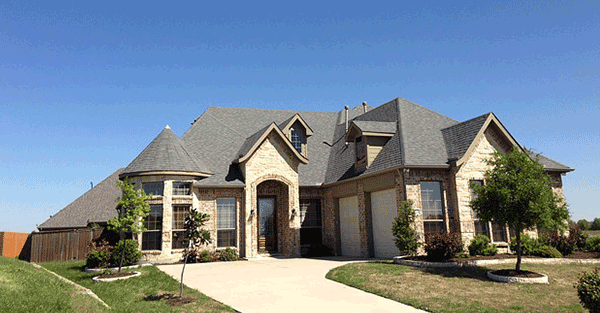
There are many advantages to using house wrap on your home. Whether you are building a new home or renovating your current one, keep this waterproofing, energy efficient material in mind. It could end up saving you money and turning your home into a safer, cleaner environment for you and your family.
What is House Wrap?
House wrap is a light, synthetic material that is installed beneath the siding of a home. It provides a weather-resistant barrier, protecting your home from moisture penetration and improving its energy efficiency. A professional contractor should install it, usually prior to door and window installation on a new home. It can also be installed on older homes. House wrap works to keep heat and humidity out in the summer and warm air in during the winter.
What Are the Advantages?
Protection from Moisture: House wrap helps prevent moisture from entering through the walls of the home. It also acts as a protective casing around the house by covering gaps and cracks that are found between the sheathing and insulation. It prevents water from seeping through and forming mold, which can lead to rot and create dangerous environmental conditions for you and your family. Breathing mold-contaminated air in the home can cause very serious health problems.
When house wrap is installed, it is laid down in sheet layers, with the higher layers overlapping the lower ones, creating water barrier to prevent moisture that gets under the siding from entering the walls of the home.
Protection from Air Infiltration: House wrap stops or slows the transfer of air from outside to the inside of the home. It produces a protective barrier from airflow, which will ultimately help create a more comfortable environment, minimize allergens, and keep indoor air clean.
Additional Protection: House wrap offers protection from U.V. radiation and is also insect- and animal- resistant to keep critters out of the nooks and crannies of your home.
Energy Savings
House wrap acts as a seal, preventing excess air infiltration or leakage. This can help shave money off of your heating and cooling bills due to higher efficiency levels and less energy waste. In addition to saving money on energy bills, you can prolong the life of your HVAC system by lightening its workload.
Types of House Wrap
House wrap can come in varying thicknesses, depending on your personal preferences. Some types contain little fibers that repel water, while other types have small holes that let the material breathe and allow water vapor to escape. This prevents moisture buildup inside the structure and resists mold or mildew formation, increasing its insulation effectiveness. Whether you have concrete, vinyl, brick, stone, or some other type of siding, house wrap can prove very effective and may be just the solution to prevent excess humidity, moisture, condensation, and mold problems.
Improper Installation Warnings
House wrap must be installed correctly in order to do its job effectively. It should be a waterproof protective surface for your home and also have a high moisture vapor transmission rate (the rate water vapor passes through a material at a certain humidity and temperature). If not installed professionally or correctly, it could cause damage to your home. If it is not handled carefully, it can rip or tear during installation. If lapped on the home improperly, moisture and mold growth could cause serious problems.
Let the professionals at Hedrick Construction handle your house wrap and siding installation services, whether you live in Ankeny, Ames, Huxley, or the surrounding area. Talk to us about how house wrap can help to boost the energy efficiency of your home.








Comments